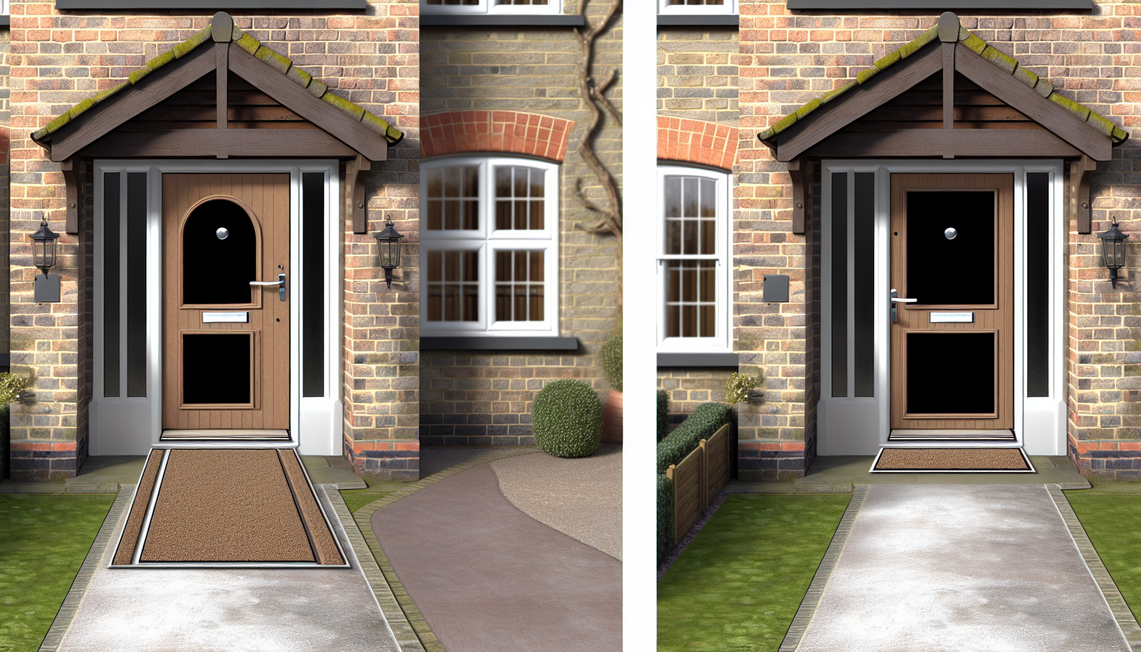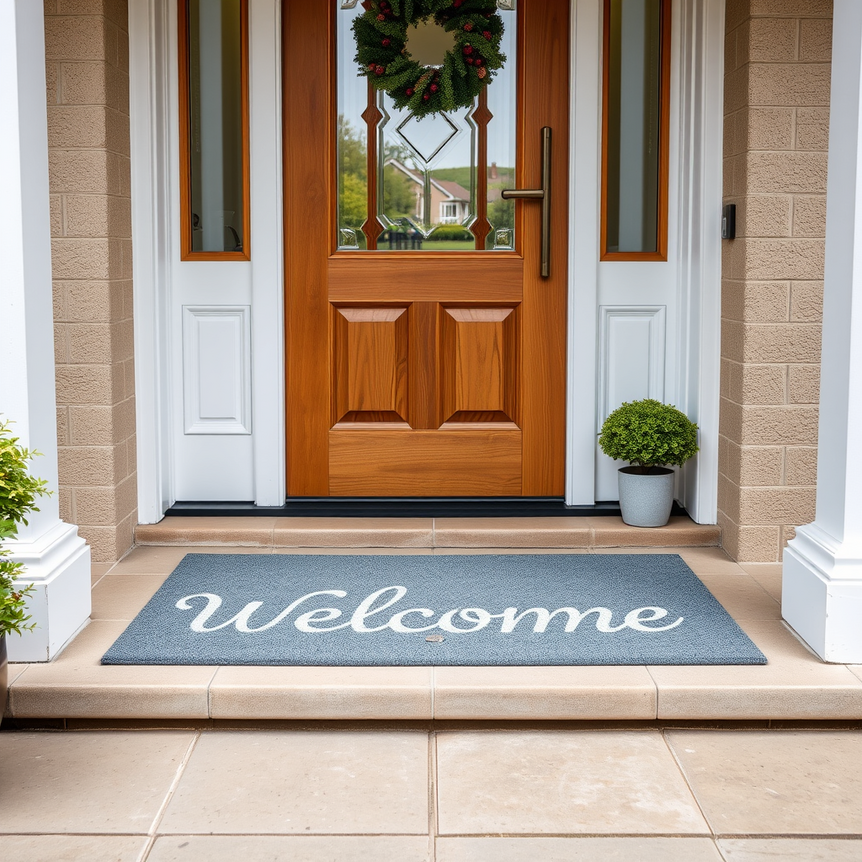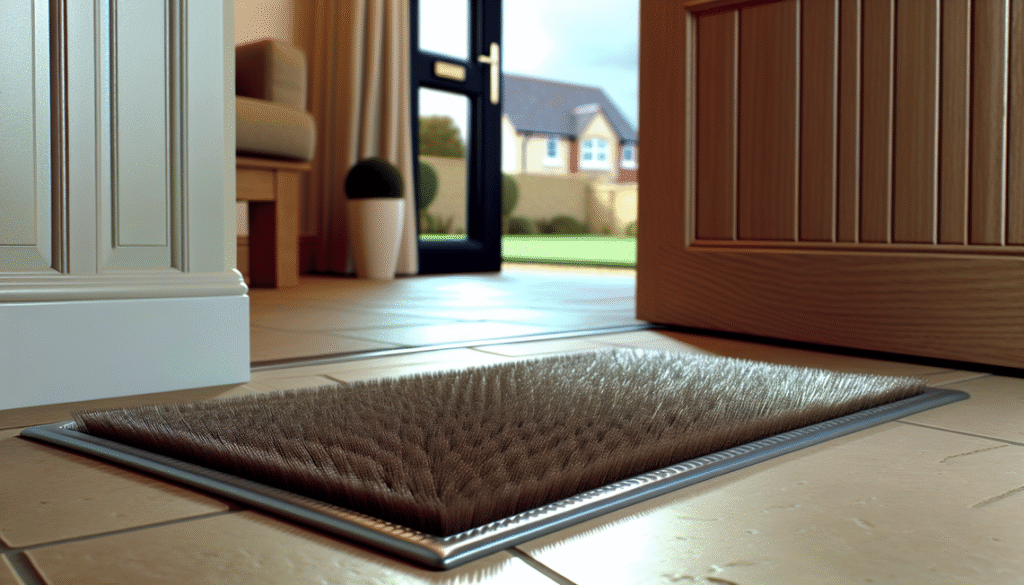Finding the perfect barrier mat for your doorway isn’t just about aesthetics — it’s about striking the right balance between functionality, durability, and design impact. Barrier mats, also commonly known as entrance mats or door mats, are indispensable for effectively capturing dirt, moisture, and debris at your home’s threshold. They play a vital role in protecting your valuable flooring, maintaining cleanliness, and enhancing safety by reducing slip hazards. However, choosing the correct size and shape is crucial to enhance performance and visual harmony, especially when fitting standard single or expansive double doorways in UK homes. This comprehensive guide will help you navigate the options to select the ideal barrier mat solution for your unique entrance, ensuring your home stays cleaner and more inviting.
How to Determine the Ideal Barrier Mat Size for Your Doorway
The cornerstone of selecting the right barrier mat size is understanding the relationship between your doorway’s dimensions and the mat’s coverage area. A widely accepted and highly effective rule for optimal dirt and moisture capture is to cover at least 80% of your door’s width with the mat. This ensures efficient capture, while preventing the mat from looking undersized, awkward, or ineffective. For instance, if your door is 36 inches wide, your mat should ideally be at least 29-30 inches wide.
For standard UK front doors, which typically average around 30 to 36 inches wide (approx. 76cm to 91cm), this means your barrier mat should be approximately 29 to 30 inches (around 74-76cm) or wider for effective coverage. Maintaining this proportion ensures the entrance mat looks natural in the space and performs optimally, especially in busy entranceways where larger mats allow multiple people to clean their feet simultaneously before stepping onto your pristine floors. It also allows for greater wiping cycles, meaning more dirt and moisture are removed per person.
Choosing the Right Barrier Mat for Standard Single Doorways
Standard single doorways, common in many UK homes, come in a variety of widths but typically range around 30 to 36 inches (76-91 cm). Barrier mats suited for these entrances often fall into two primary size categories, each serving different needs based on space and foot traffic:
- Small Format Mats (around 18 x 30 inches / 45 x 75 cm): These compact entrance door mats are ideal for secondary entrances, such as back or side doors, utility room doors, or smaller flats and apartments where space is at a premium. These barrier mats fit well in compact spaces, provide reasonable dirt and moisture capture, and won’t overcrowd limited floor space. They are often sufficient for light to moderate foot traffic.
- Medium-Sized Mats (24 x 36 inches / 60 x 90 cm): Considered the best barrier mat size for primary entrances with moderate to heavy foot traffic, these medium-sized mats offer significantly enhanced dirt and moisture capture. They comfortably accommodate multiple people wiping their feet simultaneously and offer a substantial visual presence, acting as an anchor for the doorway. These mats provide superior floor protection for hallways and main living areas, especially in family homes or those with pets.
Selecting between these sizes depends largely on available floor space, the volume of foot traffic, and specific interior design preferences. For homes with active households, children, or pets, medium mats generally provide better protection and longevity.
Sizing and Shaping Barrier Mats for Double Doorways
Double doorways, often found in grander homes, open-plan living spaces, or commercial residences, present unique challenges due to their expansive width, typically around 60 to 80 inches (152 to 203 cm), including frames and hardware. A barrier mat sized for a single door will appear disproportionately small, provide insufficient coverage, and fail to offer adequate floor protection.
- Optimal Size for Double Doors: 24 x 60 inches (60 x 150 cm) or larger
This larger dimension is specifically designed to cover both door panels effectively, offering a continuous and clean sweep area for all foot traffic patterns at wider entrances. It ensures dirt and moisture are trapped comprehensively before reaching your interiors. For even wider openings, mats up to 36 x 72 inches (90 x 180 cm) are available or recommended. - Proportional Considerations
A barrier mat that is too narrow or small on a double-door entrance not only looks out of place from an aesthetic perspective but will also result in dirt and debris bypassing the mat, rendering it ineffective. Double doors invite foot traffic at various angles and from multiple directions simultaneously, so a suitably wide mat accommodates this diverse flow. This maintains superior cleanliness and significantly improves safety by reducing slippery surfaces near the doors, which is critical in wet British weather.
If your double doorway is unusually wide, features complex architectural details, or serves a very high-traffic area (e.g., a patio door leading to a garden), consider custom-sized mats or multiple mat configurations to maximize coverage while complementing the space’s design. This ensures seamless integration and optimal functionality.
Accurate Measuring Techniques to Ensure Perfect Barrier Mat Fit
To select the right barrier mat size, precise measurement is absolutely essential. Taking accurate measurements prevents costly returns, ensures optimal performance, and avoids unsafe setups like tripping hazards or obstructed door swings:
- Width: Measure from the inside edge of one door frame to the inside edge of the opposite door frame. Account for any protruding handles, locks, or architectural mouldings that might reduce the effective width. Apply the 80% coverage guideline to determine your minimum mat width. If space allows, choosing a slightly wider mat for better performance and aesthetics is often beneficial.
- Depth: Equally important is the mat’s depth (how far it extends from the doorway outward). Typical barrier mats range from 18 to 36 inches (45 to 90 cm) deep. Consider the available clear space inside your entrance hall. It’s crucial to avoid extending mats too far into the room, as this can create tripping hazards or, critically, block the full swing of the door. Always test the door clearance with a tape measure set to the mat’s intended depth.
- Surrounding Space: Account for any architectural features, nearby furniture, steps, or available floor area in the entrance hall. In smaller or irregularly shaped spaces, common in Victorian and older UK homes, careful positioning of your entrance mat is key to ensure both safety and maximum mat effectiveness. Visualise how the mat will sit within the space.
Always use a reliable tape measure, and meticulously note all these dimensions before consulting product size charts online or in-store. Ensuring your barrier mat matches these parameters is vital for both functionality and aesthetic appeal.
Custom and Large-Scale Barrier Mats for Non-Standard Entrances
Some properties, particularly older, period homes or larger contemporary residences, accommodate entrances that are wider, taller, or more irregularly shaped than typical UK doors. For these unique scenarios, specialised solutions are available:
- Bespoke Mats: Custom-sized barrier mats can be tailored to exact dimensions, accommodating uniquely shaped or extra-wide doorways, unusual angles, or specific architectural features. This option guarantees optimal coverage, seamless design integration, and a truly custom fit for architecturally detailed entrances, ensuring no part of your floor is left unprotected.
- Large-Scale Mats: For grand entrance halls, reception areas, or commercial-style entrances, much larger barrier mats are often necessary. These can range significantly in size, with some up to 7 square metres (e.g., 2m x 3.5m) or even larger. Oversized entrance mats deliver comprehensive floor protection against heavy footfall and make a strong visual statement. In such cases, mats should be constructed from incredibly durable, weather-resistant materials capable of handling continuous heavy traffic and exposure to the elements, as is often the case with exterior doors.
- Multiple Mats Combination: For flexibility, ease of maintenance, and adaptability to complex floor layouts, using several smaller barrier mats side by side can be a practical alternative to a single large custom mat. This approach suits complex floor layouts, L-shaped hallways, or very high-traffic zones, allowing individual mats to be cleaned or replaced without disrupting the entire entrance setup. This strategy can also be more cost-effective than a single bespoke solution.
Material and Durability Considerations Based on Mat Size
The size of your barrier mat significantly influences the most appropriate material choices and the demands placed on its durability. Understanding this link is crucial for longevity and performance:
- Larger Mats: Due to their increased surface area and potential for heavier use, larger barrier mats require stronger, more robust backing materials to prevent curling, creasing, and edges lifting, which can quickly create dangerous trip hazards. High-quality synthetic fibers like polypropylene or polyamide are excellent choices for the pile, offering superb robustness against heavy wear, resistance to crushing, and superior dirt and moisture trapping capabilities. Vinyl-backed or rubber-backed mats are highly recommended for their stability and slip resistance on smooth floors, crucial for UK weather conditions.
- Weather Resistance: Given the UK’s variable climate—frequent rain, mud, and moisture—it’s imperative that all barrier mats, especially larger ones, resist degradation from water and retain their grip on wet surfaces. Look for Water Absorbent Barrier Mats yet quick-drying and easy to clean. Larger entrance mats, in particular, must effectively resist water saturation and be simple to clean (e.g., hose-down capabilities) to maintain their barrier efficiency and appearance over time.
Selecting appropriate materials paired with the correct sizing guarantees long-term durability and streamlined maintenance, making your investment in a high-quality barrier mat a practical and wise decision for typical British weather.
Installation Tips and Maintenance for Various Barrier Mat Sizes
Proper installation and regular maintenance are key to maximising the lifespan and effectiveness of your barrier mat, regardless of its size. Different sizes may require slightly different approaches:
-
- Installation: Larger barrier mats can be cumbersome to position correctly and safely. It’s often advisable to have two people to unroll and position them evenly, ensuring they lie perfectly flat. For all mats, but especially crucial for larger ones, using non-slip backing or an additional non-slip underlay is essential to prevent movement on smooth surfaces like tile, laminate, or wood. This significantly improves safety by preventing slips and trips. Smaller mats should also be firmly secured or feature effective non-slip properties to prevent displacement from daily foot traffic. Always ensure the mat is placed on a clean, dry surface to maximise grip.
- Maintenance: The maintenance routine will vary with mat size and material. Larger barrier mats, particularly those in high-traffic areas, might require more robust cleaning methods such as professional cleaning services, outdoor shaking, or occasional hosing down (if the material permits). Smaller mats, on the other hand, can typically be machine-washed (check care labels), vigorously shaken out, or vacuumed with ease. Regular cleaning and vacuuming are vital to prevent dirt and grit build-up, which can degrade the mat’s fibres over time. Consistent upkeep extends the mat’s lifespan, maintains its appearance, and ensures it continues to effectively trap dirt and moisture, keeping your entrance inviting and safe. Read our guide on How to clean & maintain your Barrier Mat.
Choosing the right barrier mat size for your doorway—whether it’s for a snug standard single door or an elegant expansive double entrance—is a critical decision that ensures optimal dirt control, enhanced safety, and improved visual appeal for your home. By measuring meticulously, considering your unique doorway dimensions, and selecting barrier mats specifically designed for UK entrance specifications, you invest in a practical yet stylish solution. This not only protects your valuable flooring but also significantly enhances your home’s welcome and overall cleanliness.Explore a wide range of expertly sized barrier mats and discover bespoke options to fit every doorway, ensuring superior floor protection and style, at Rugstars Barrier Door Mats.
Frequently Asked Questions About Barrier Mat Sizes and Shapes
What is the ideal size for a barrier mat for a standard UK single doorway?
For a standard UK single doorway, which typically ranges from 30 to 36 inches (76-91 cm) wide, an ideal barrier mat size would be around 24 x 36 inches (60 x 90 cm). This size covers approximately 80% of the door’s width, ensuring effective dirt and moisture capture for moderate to heavy foot traffic. Smaller mats (e.g., 18 x 30 inches) can be suitable for secondary entrances or smaller flats.
How do I choose the correct barrier mat size for a double doorway?
For double doorways, which are significantly wider (typically 60-80 inches or 152-203 cm), a larger barrier mat is essential. The optimal size is generally around 24 x 60 inches (60 x 150 cm) or larger. This ensures comprehensive coverage across both door panels, effectively trapping dirt and moisture and preventing it from entering your home, while also maintaining aesthetic proportionality.
What are the key measurements I need to take before buying a barrier mat?
You need to measure the clear width of your doorway (from frame to frame, accounting for any obstructions) and the available depth in your entrance area (from the doorway outward). Remember the 80% width coverage rule and ensure the mat’s depth does not impede the door’s full swing or create a tripping hazard.
What materials are best for barrier mats, especially in the UK climate?
For the UK’s variable climate, look for barrier mats made from durable, weather-resistant materials like polypropylene or polyamide for the pile, with a strong, slip-resistant backing (e.g., vinyl or rubber). These materials are excellent at trapping dirt and moisture, resist degradation, dry quickly, and prevent the mat from slipping on wet or smooth surfaces, ensuring longevity and safety.
How do I maintain a large barrier mat for long-term effectiveness?
Larger barrier mats benefit from regular vacuuming, vigorous shaking outdoors, or occasional hosing down (if the material permits) to remove accumulated dirt and grit. Ensure they dry completely before being placed back. Professional cleaning might be beneficial periodically for heavily trafficked mats. Consistent maintenance prevents dirt build-up, extends the mat’s lifespan, and ensures it continues to perform its function effectively.



